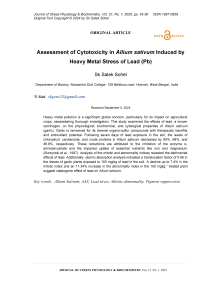Assessment of cytotoxicity in Allium sativum induced by heavy metal stress of lead (Pb)
Автор: Sohel Sk Salek
Журнал: Журнал стресс-физиологии и биохимии @jspb
Статья в выпуске: 1 т.21, 2025 года.
Бесплатный доступ
Heavy metal pollution is a significant global concern, particularly for its impact on agricultural crops, necessitating thorough investigation. This study examined the effects of lead, a known carcinogen, on the physiological, biochemical, and cytological properties of Allium sativum (garlic). Garlic is renowned for its diverse organo-sulfur compounds with therapeutic benefits and antioxidant potential. Following seven days of lead exposure in the soil, the levels of chlorophyll, carotenoids, and crude proteins in Allium sativum decreased by 80%, 68%, and 46.9%, respectively. These reductions are attributed to the inhibition of the enzyme α-aminolevulinate and the impaired uptake of essential nutrients like iron and magnesium (Burzyński et al., 1987). Analysis of the mitotic and abnormality indices revealed the detrimental effects of lead. Additionally, atomic absorption analysis indicated a translocation factor of 0.89 in the leaves of garlic plants exposed to 100 mg/kg of lead in the soil. A decline up to 7.4% in the mitotic index and an 11.34% increase in the abnormality index in the 100 mgkg-1 treated plant suggest clastogenic effect of lead on Allium sativum.
Allium sativum, aas, lead stress, mitotic abnormality, pigment suppression
Короткий адрес: https://sciup.org/143183781
IDR: 143183781
Текст научной статьи Assessment of cytotoxicity in Allium sativum induced by heavy metal stress of lead (Pb)
The Phrase Heavy metals designated to a class of dense, metals which are having high atomic number, molecular weight, specific gravity greater than 5.0 and is usually toxic at low concentration.it includes some metals. metalloids, transition metals, lanthanides and actinides. Increase in the Geological and anthropogenic activities like metal smelting use of fertilizer and pesticides. sewage sludge, waste from chemical industries have known to increase in the amounts of harmful heavy metals, that can be toxic for Human. Animals, Plants and microbes. Presence of a heavy metal greater than its required concentration or uptake of non-essential metals affect the availability of another metal in soil and so to plants. Heavy metals may modify soil properties particularly soil biological properties (Abdu et al., 2020). pH of a soil is the major factor affecting metal availability Effect of heavy metals on physiology and biochemistry of plants can be of either direct or indirect toxic effect (Burzynski et. al.1987). Direct effect occurs as inhibition of growth destruction of cellular components, and degradation of enzyme activity while indirect effects may possess problems like replacement of essential nutrient at cation exchange sites. Allium sativum L. (Family: Amaryllidaceae) is a potential plant for absorption and accumulation of heavy metals. Although there is extensive literature relating to cellular levels and physiological studies on the effect of heavy metals on plants, Pb tolerance strategies of plants have not been clearly explained yet. in an investigation (Jiang, 2010) in their work showed the effects of different concentrations of Pb on growth for 20-day hydroponically grown A, sativum shows an indication that Pb had significant inhibitory effects on shoot and root growth at high concentrations on roots and explain the possible mechanisms of the Pb-induced cellular defense system in the root meristematic cells of A. sativum.
MATERIALS AND METHODS
Plant material.
Garlic (Allium sativum) Is a herbaceous plant belong to the family Amaryllidaceae, known to originated from Central Asian countries. It is one of the oldest food flavourings. The raw clove are often pungent in taste and their strong flavour and onion-like fragrance due to the presence of compounds like Alliin, Allicin (Kubec et al., 2013). The average height of a garlic plant is 0 cm (2 feet). Young garlic bulbs were collected from sanichari market, Bilaspur. For the experimental purpose this experiment is carried out in the following fashion: Bulb of Allium sativum was taken from sanichary bazar, Bilaspur Chhattisgarh. Washed with distilled water dipped in 0.1%. Mercuric chloride (HgCl2) solution. For up to 5-10 minutes. Seeds are again washed with distilled water to remove HgCl2 and sowed in the plots.
Germination and growth of the plants under different condition of metals.
After 7 days off, showing the effect of heavy metal laid on germination. And growth has been inspected. And the result is plotted as a chart in result section.
Analysis of cytotoxic effect Allium sativum Induced by the heavy metal stress of lead (Pb).
Test chemicals.
-
i. 45% acidic acid: 95% ethanol. (1:3)
-
ii. 2% Acetoorcein: HCl (9:1)
-
iii. 45% Glacial acetic acid
-
iv. Different Concentration of lead (25 mg/kg,50 mg/kg,75mg/kg,100mg/kg)
Treatment.
Young cloves are cultivated in a pot containing different concentrations of metal (Pb) ranging from 25mg/kg to highest100mg/kg in soil. To make sure proper distribution of heavy metals, 1kg autoclaved airdried soil were filled in the pots and lead is mixed with in between the layers thoroughly. Approx 8 cloves were sown in each pot. Pots were watered daily to field capacity.
Fixation.
Root tips were collected after seven days of sowing. Wash properly and fix it in the proper fixative agent -acetic acid: ethanol (1:3) for 24 hours in 4◦ C in the refrigerator then hydrolysed in 1 N HCl at 0°C for 10 min
Maceration and staining.
Fixed root tips are treated in, 45% acetic acid solution for 10 minutes then transformed into a tube containing staining mixture of 2% acetoorcein and HCl (9:1). Then tube is heated over the flame for 15-30 seconds and kept in the room temperature for 45 minutes (Sharma and Sharma 1999, Ray et al. 2012).
Squashing
A root tip was taken in a drop of 45% acetic acid in clean slide. The tip region was darkly stained as compared to rest of the part, was taken discarding other parts of the root tip and squash by applying gentle uniform pressure all around the dark stained part with the help of thumb and excessive acetic acid is cleared by a piece of blotting paper. After that, the preparation was sealed by applying DPX around the edge of the transparent cover glass.
Estimation of chlorophyll and carotenoid content:
Maclachalan and Zalick (1963) formulas are:
Chlorophyll a = (12.6 x D663 - 0.86x D645)x V)/{d x 1000 x IV) Chlorophyll b = (19.3 x D645 - 3.6 x D663)x V~)/(d x 1000 x IV) Carotenoids = (7.6 x D480 - 1.49x D510)x V)/(d x 1000 x IV) Where D = absorbance at specific wavelength, d = volume of a cuvette v = amount of acetone used, w= weight of leaf sample used
Estimation of protein content:
Fresh leaves were collected from 21 days growing heavy metal treated plants and control plants with no heavy metal treatment. 100mg leaves were homogenized thoroughly in 10ml solution.1 N 0.5 ml NaOH crushed sample were transferred in a test tube and .05ml of sodium hydroxide was added in this solution and put it in waterbath at 5◦C for about 10-15 minutes. Resultant mixture was allowed to cool in room temperature after 5-10 minutes 2.5ml of freshly prepared reagent C (2ml of .05% CuSO4 in 50 ml of a mixture containing 15 sodium -potassium tartarate in Na2CO3). Five minutes later 0.5 ml of Folin’s reagent was added to the mixture and kept it in room temperature .10-15 minutes later blue color appeared. Prepared a stock solution of 1000ug/ml by using lysozyme as standard protein and from this different concentration of working solution was made. 2.5ml of freshly prepared Reagent C was added. After that 0.05 ml of 1 N Folin’s reagent was added and kept it in room temperature for 10 minutes. Resultant data were plotted in a graph with y=mx equation that give standard curve. From this standard curve absorbance was wrote down at 50nm against a blank solution containing no sample solution. Concentration of protein was expressed in terms of mg/ml unitaccording (Waterborg, 2009) to lowry protocol.
Sample preparation and AAS Analysis for heavy metal detection:
Collected foliage leaves from plants growing in different concentration of lead were dried in hot air oven at 30◦C overnight. In the next day, samples were crushed in a mortar pastel to make fine powder upto minimum of 500mg in weight.A mixture of aquaregia (HCl:HNO 3 =1:3) is prepared and the crushed powdery samples were dip on it.the mixture solution was kept inside fumehood chamber and kept it overnight. On the subsequent day when the fume was found to be negligible, it was remove from fumehood and place it in room temperature. Solution was filtered through Whatman No.1 filtered paper and Volume was make up upto 100ml by adding double disttlled water.
RESULTS
Effect of Pb on clove sprouting and plant growth:
Plants were grown on different concentration of the heavy metals and checked for their germination effect. To start the experiment, 1kg sterilised soil was put in every pot containing different concentrations of metals along with a control sample. On 7 days of sowing clove primordia start initiating which shows 12.5% reduction in the 100mg/kg lead treated pots while rest of them are growing naturally. Shoot and root length measurement was done periodically from 7th,14th,21st and 28th days of sowing. Difference in growth was shown in figure .
Estimation of chlorophyll and carotenoid content:
Result depicted a clear decrease in the amount of chlorophyll a by 80.7 % chlorophyll b by 89.11% and carotenoids by 8%. In sum total chlorophyll decreased of 87.93% with respect to the controlled sample, which is a huge impact on pigment system of the plant.
Estimation of protein content:
Effect of lead on physiological level was checked by crude protein estimation. For this standard curve was made using lysozyme as standard and absorbance was taken at 50nm.standard curve showed corelation coefficient value of 0.99. This standard curve helped in determination of amount of crude protein in treated plants. Results shows remarkable reduction in amount of 4 .51% was found in plants growing in 100mg/kg lead treated concentrations of soil.
Atomic Absorption Spectroscopy (AAS) Analysis for heavy metal detection:
Translocation of lead was crucial in the detection of phytotoxicity and metal tolerance ability of the studied plant. Atomic Absorption Spectroscopy analysis was carried out from plant ash made from young leaves. Results showed 0.48 μg/kg lead accumulation in 25mg/kg sample as compared to control. While the highest amount of metal detected through AAS was found in case of plants grown in 100mglkg lead mixture at huge 9.48 μg/kg rate. Translocation factor for the 100mg/kg soil was found to be 1.04 and 0.89 in root and shoot respectively Takarina et al . (2017)
Statistical Analysis:
All of the major findings were statistically analysis through Pearson’s two-tailed correlation to find out if there is any kind of significant corelation can be drawn between concentration of lead and physiological changes in plant parameter like chlorophyll, carotenoid and proteins content. Results shown below suggested a strong negative correlation between them.
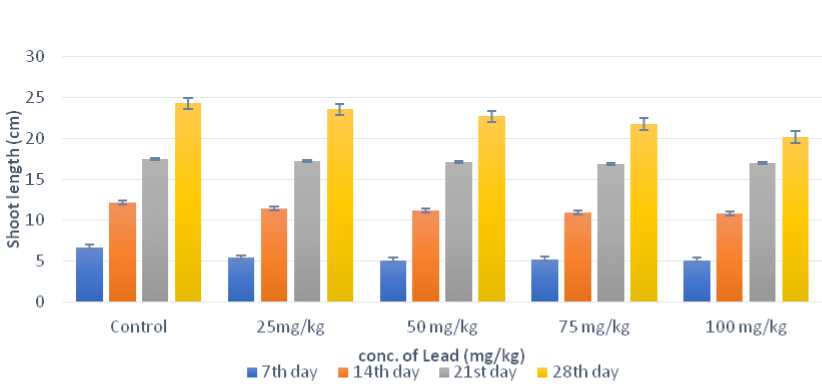
Figure 1: Protein content (µg/g) of Amaranthus dubius (a) leaves (b) stem (c) roots and (d) seeds watered with various concentrations of sodium fluoride harvested on various days
Table 1 : Comparison of weekly shoot length as an effect on the physiological parameter of Allium sativum after induction by lead stress, cm
|
Days |
Control |
25mg/kg |
50 mg/kg |
75 mg/kg |
100 mg/kg |
|
7 |
.72 |
5.45 |
5.1 |
5.23 |
5.14 |
|
14 |
12.21 |
11.43 |
11.2 |
10.95 |
10.8 |
|
21 |
17.43 |
17.22 |
17.1 |
1 .85 |
1 .95 |
|
28 |
24.23 |
23.5 |
22. 5 |
21.75 |
20.15 |
Table 2: Comparison of weekly root length as an effect on the physiological parameter of Allium sativum after induction by lead stress
|
Days |
Control |
25mg/kg |
50 mg/kg |
75 mg/kg |
100 mg/kg |
|
7 |
7.8 |
.45 |
.1 |
.23 |
5.8 |
|
14 |
11.4 |
10.23 |
11.2 |
9.85 |
10.8 |
|
21 |
1 .5 |
14.12 |
15.1 |
15.2 |
14.95 |
|
28 |
21.23 |
19.2 |
20.13 |
18.25 |
18.15 |
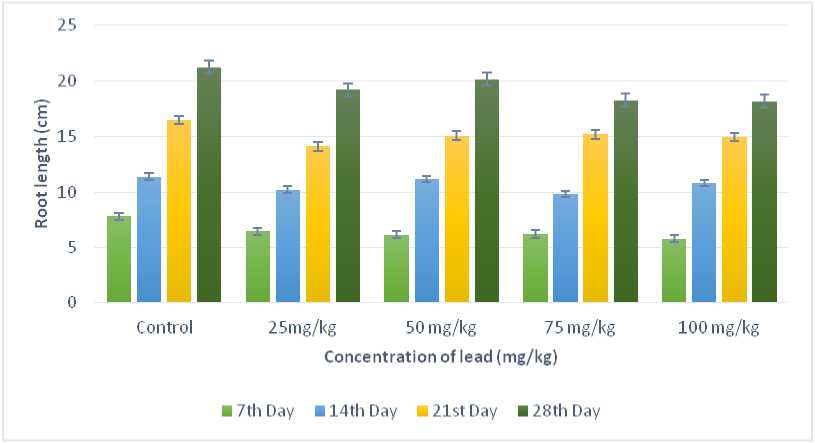
Figure 2. Variation in root length after treatment with different conc. of lead and comparison with control
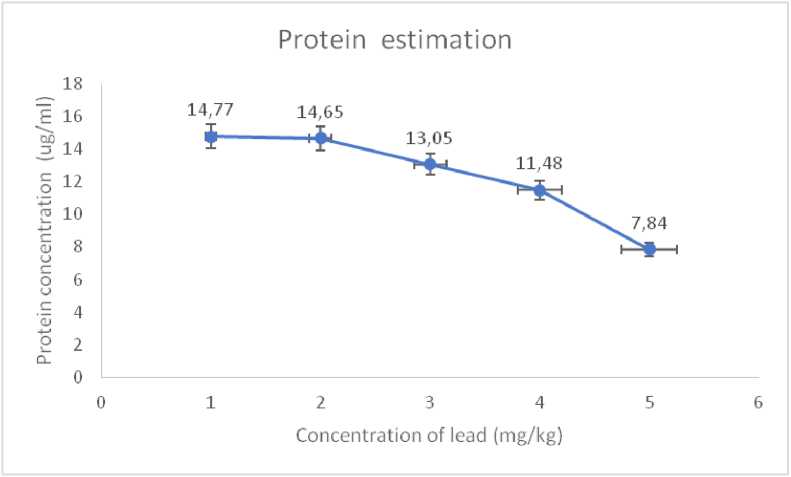
Figure 3: Changes in crude protein concentration after treatment with different conc. of lead and comparison with control
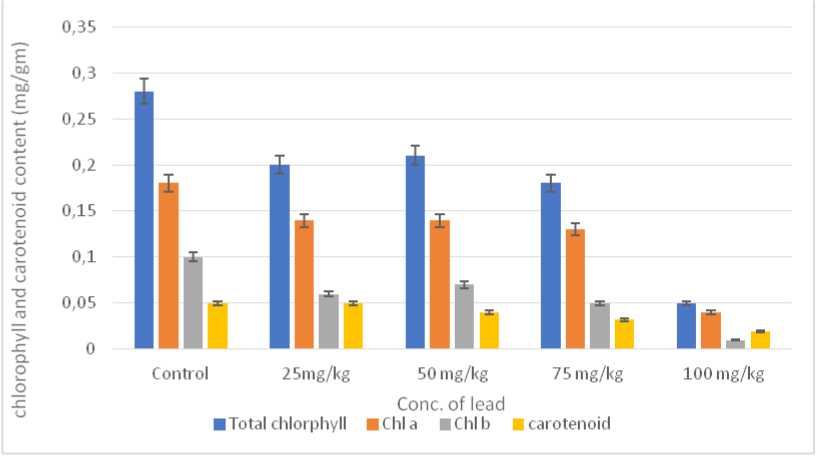
Figure 4: Graph showing relative amount of chlorophyll and carotenoid content varied in different concentration lead treated plants
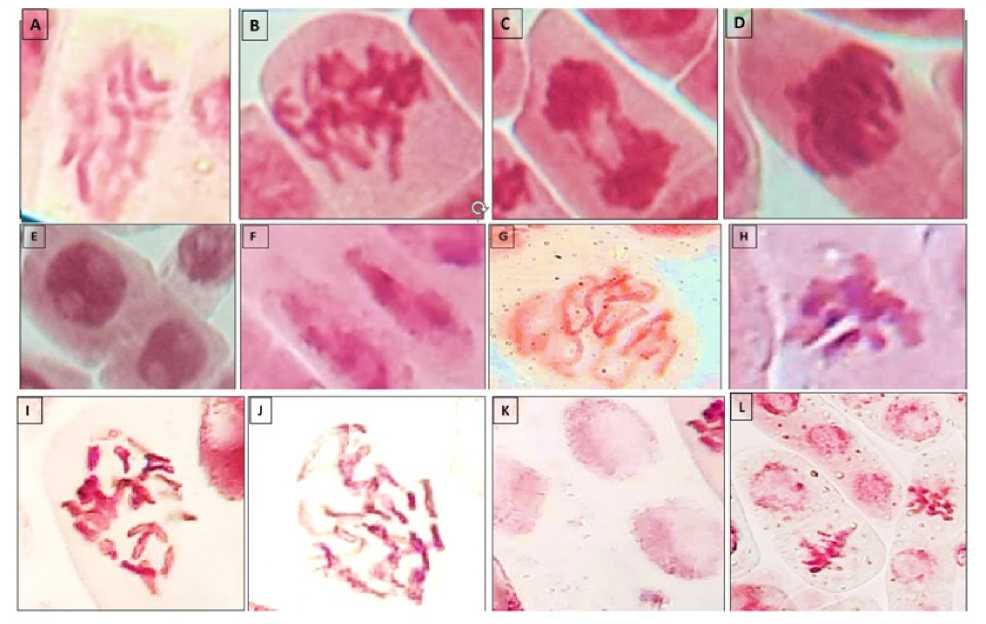
Figure 5: Different chromosomal abnormalities as seen under microscope after lead induction:
Table 3: Effect of lead stress on Mitotic index and abnormality index of Allium sativum
Mitotic index = (Total no. of cell in divisional stage x 100)/total no. of cells observed
Abnormality index = (Total no. of abnormality observed x 100)/total no. of cell in divisional stage
|
Control |
25 mg/kg |
50 mg/kg |
75 mg/kg |
100 mg/kg |
|
|
No. of cell observed |
200 |
200 |
200 |
200 |
200 |
|
Prophase (%) |
4 .10 |
42.38 |
38.25 |
38.10 |
34.45 |
|
Metaphase (%) |
2 .1 |
28.52 |
29.40 |
2 .5 |
20.50 |
|
Anaphase (%) |
18.24 |
17.10 |
17.89 |
15.9 |
21.37 |
|
Telophase (%) |
10.50 |
12.00 |
14.4 |
19.38 |
23. 8 |
|
Mitotic index |
12.2% |
10.8% |
9.5% |
7.8% |
4.75% |
|
Abnormality index |
0% |
0% |
3.84% |
8.18% |
11.34% |
Table 4: Results of statistical analysis through Pearson’s two-tailed correlation
|
Lead (Pb) |
Protein |
Chlorophyll |
Mitotic index |
||
|
Lead (Pb) |
Pearson corelation |
1 |
-0.941 |
-0.84 |
-0.919 |
|
Sig.(2-tailed) |
0.17 |
0.71 |
0.027 |
||
DISCUSSION
Heavy metal stress is a well-known phenomenon in modern biology that has numerous direct and indirect effects on plants by upsetting their physiological and metabolic pathways. Lead is one of the metals that is dangerous to people, animals, plants, and the environment Paints, reusable batteries, industrial goods, and other items include it. Considered immobile in soil, lead can substitute necessary ions in cell communication, change enzymatic activity, interfere with mitotic phases, lower chlorophyll content, and stunt root growth. Table 2 suggested a dramatic decline in the prevalence of the metaphase stage, possibly delivering a signal to stop cell division at the conclusion of the Prophage stage. Furthermore, notable variations in each phase, which vary according to the lead concentration, result in uneven cell division in the root's meristematic zone. In comparison to the control sample, the highest treated plant exhibited a 7.4% decrease in the mitotic index and an 11.34% increase in the abnormality index when compared to control, according to the results. The most obvious signs of cytotoxicity are recurrent C-mitosis and chromosomal spindle failure and stickiness. Lessening of crude protein was also seen. Approximately 4 .9% of the protein was present relative to the control sample. This could be a result of an overabundance of ribonuclease and protease-like enzymes having increased activity. Figure 4 displays the results of the estimation of chlorophyll, which is 83.9%. decrease in the amount of chlorophyll overall. and a 8% decrease in carotenoid content in the plants treated with 100 mg/kg of lead. According to Prasad et al. (1987), the reduction in chlorophyll content in Allium sativam is thought to be caused by the suppression of an enzyme called α-aminoacvulinate as well as by a compromised uptake of vital components including iron and magnesium. ( Burzynski et al., 1987). Ašimović's et al. (201 ) remark corroborated the experiment's outcome. Compared to chlorophyll a, chlorophyll b is more impacted.
CONCLUSION
The purpose of this experiment was to investigate the physiological, biochemical, and cytological effects of Allium sativum. Lead concentrations were shown to be strongly correlated negatively with chlorophyll and catenoid content. At the maximum concentration, there was a significant reduction in protein content as well. The sharp decline in the mitotic index and the subsequent decline in the abnormality index both reflect out this negative correlation. In summary, 100 mg/kg stress of lead in soil found to cause chromosomal abnormality, chlorophyll inhibition, impeded shoot growth, induction of leaf chlorosis, and a decrease in protein content, all of which combinely contribute to the poor growth and function of the studied plant. Blockage in the G1-phase and inhibition of DNA synthesis at the S-phase of the cell cycle may be the root cause of mito-depressive activity. Which can be confirmed by in-depth molecular studies related to DNA damage and gentoxicity
CONFLICTS OF INTEREST
The author declare that he has no potential conflicts of interest.
Список литературы Assessment of cytotoxicity in Allium sativum induced by heavy metal stress of lead (Pb)
- Abdu, N., Abdullahi, A. A., & Abdulkadir, A. (2017). Heavy metals and soil microbes. Environmental Chemistry Letters, 15*, 65-84. DOI 10.1007/s10311-016-0587-x.
- Ašimović, Z., Čengić, L., Hodžić, J., & Murtić, S. (2016). Spectrophotometric determination of total chlorophyll content in fresh vegetables. God. LXI Broj, 66, 104-108.
- Burzynski, M. (1987). The influence of lead and cadmium on the absorption and distribution of potassium, calcium, magnesium, and iron in cucumber seedlings. Acta Physiologiae Plantarum, 9*(4).
- El-Saber Batiha, G., et al. (2020). Chemical constituents and pharmacological activities of garlic (Allium sativum L.): A review. Nutrients, 12*(3), 872.
- Jiang, W., & Liu, D. (2010). Pb-induced cellular defense system in the root meristematic cells of Allium sativum L. BMC Plant Biology, 10*, 1-8.
- Kubec, R., Krejcova, P., Mansur, L., & García, N. (2013). Flavor precursors and sensory-active sulfur compounds in alliaceae species native to South Africa and South America. Journal of agricultural and food chemistry, 61(6), 1335-1342.
- MacLachlan, S., & Zalik, S. (1963). Plastid structure, chlorophyll concentration, and free amino acid composition of a chlorophyll mutant of barley. Canadian Journal of Botany, 41*(7), 1053-1062.
- Prasad, D. D. K., & Prasad, A. R. K. (1987). Altered δ-aminolevulinic acid metabolism by lead and mercury in germinating seedlings of Bajra (Pennisetum typhoideum). Journal of Plant Physiology, 127*(3-4), 241-249.
- Prsa, I., Stampar, F., Vodnik, D., & Veberic, R. (2007). Influence of nitrogen on leaf chlorophyll content and photosynthesis of ‘Golden Delicious’ apple. Acta Agriculturae Scandinavica Section B-Soil and Plant Science, 57*(3), 283-289.
- Rossato, L. V., Nicoloso, F. T., Farias, J. G., Cargnelluti, D., Tabaldi, L. A., Antes, F. G., ... & Schetinger, M. R. C. (2012). Effects of lead on the growth, lead accumulation and physiological responses of Pluchea sagittalis. Ecotoxicology, 21*, 111-123.
- Sharma, A. K., & Sharma, A. (1999). *Plant chromosome: Analysis, manipulating and engineering. Hardwood Academic Publishers.
- Sharma, R. K., & Agrawal, M. (2005). Biological effects of heavy metals: An overview. Journal of Environmental Biology, 26*(2), 301-313.
- Takarina, N. D., & Pin, T. G. (2017). Bioconcentration factor (BCF) and translocation factor (TF) of heavy metals in mangrove trees of Blanakan fish farm. Makara Journal of Science, 77-8
- Waterborg, J. H. (2009). The Lowry method for protein quantitation. The protein protocols handbook, 7-10.

